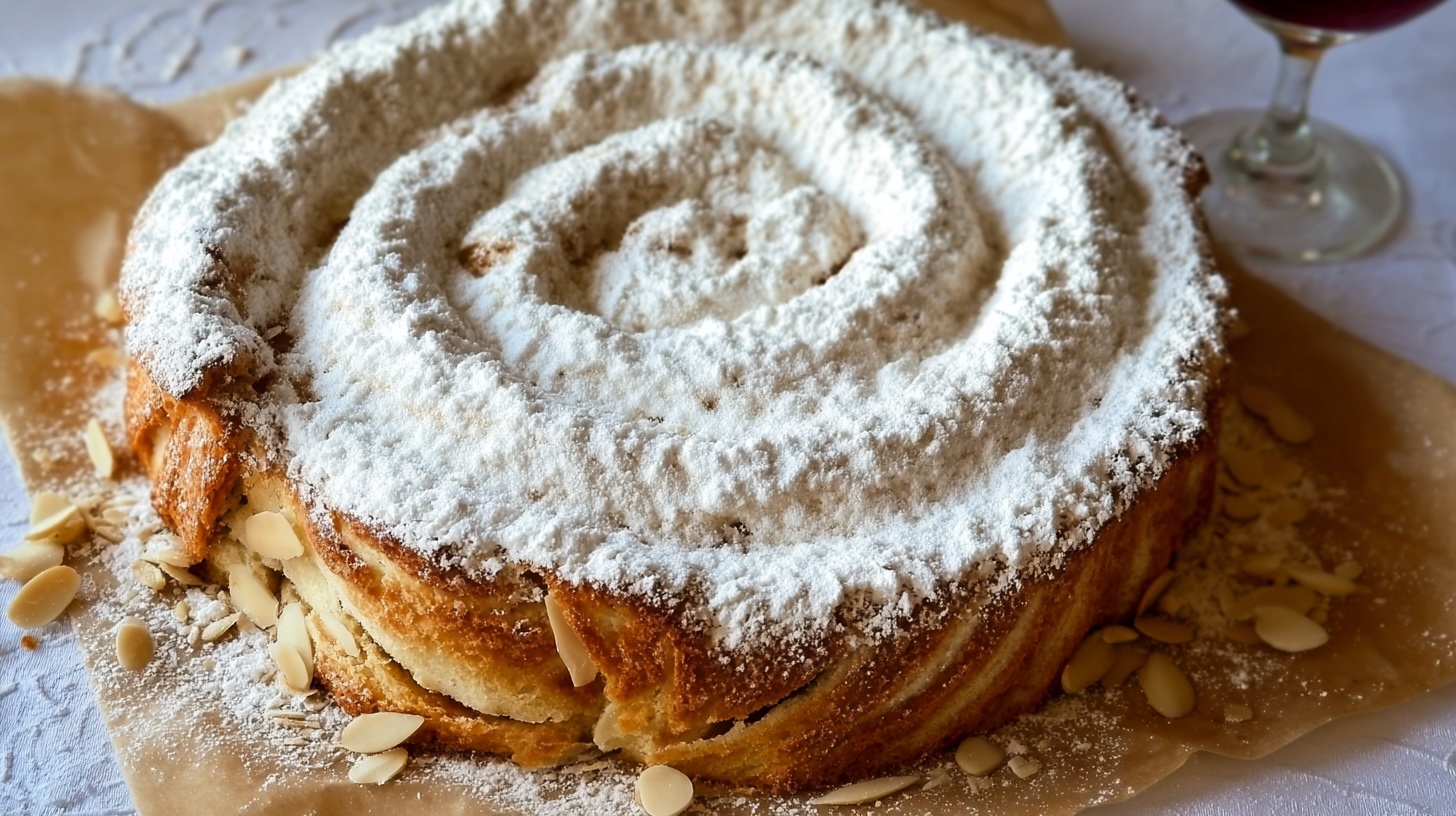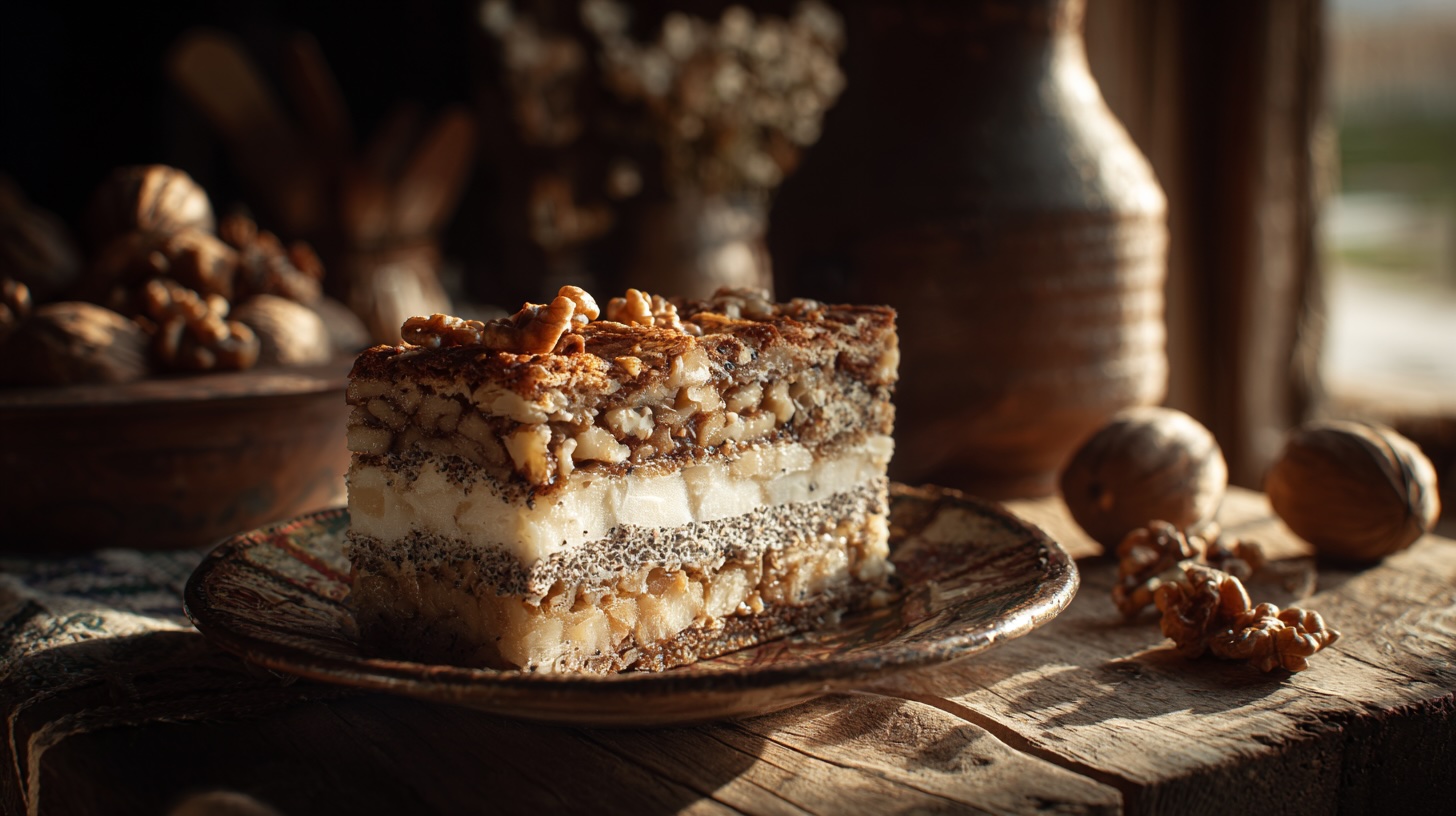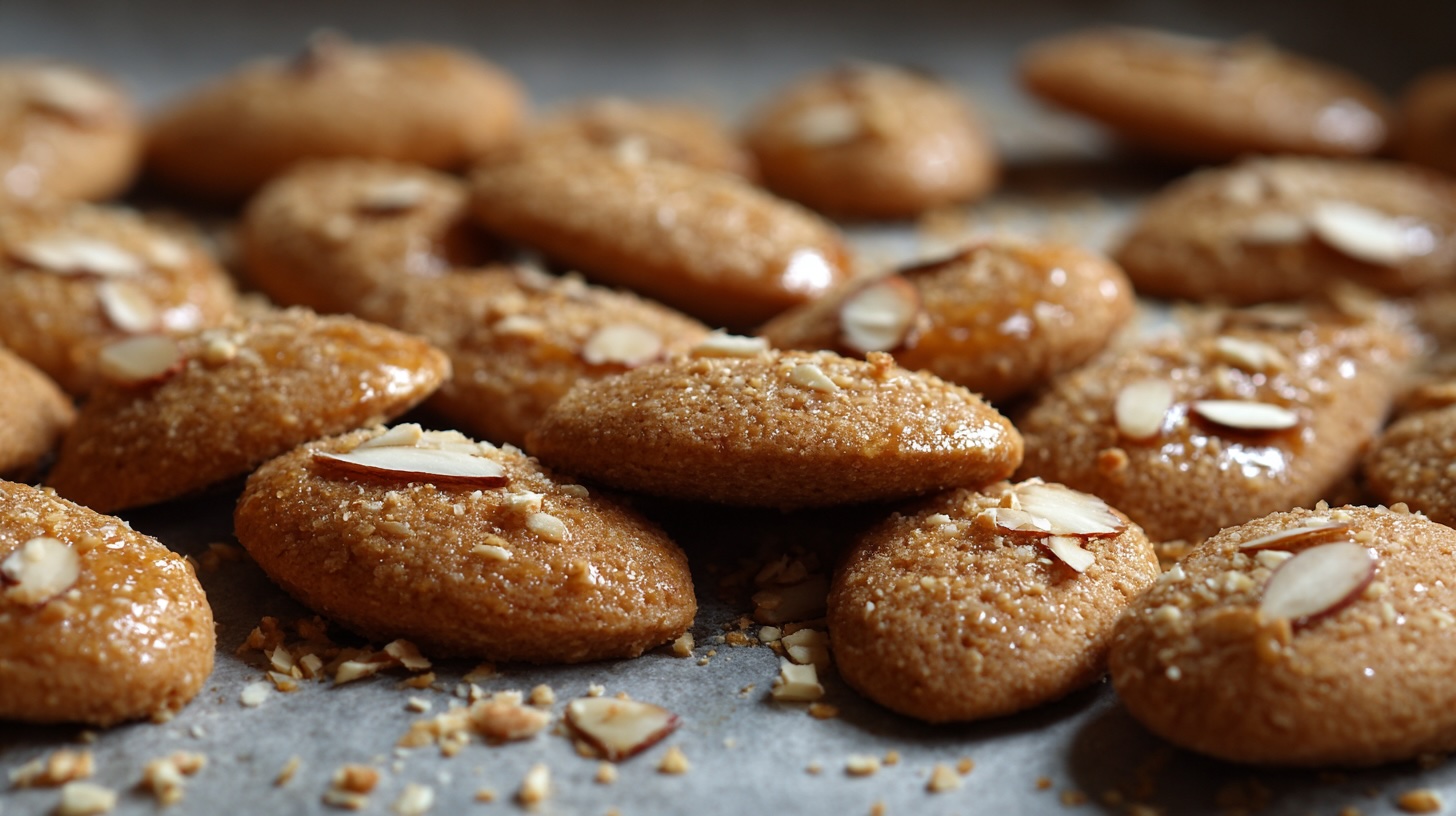A Slice of the Adriatic: The Sweet, Stubborn Story of Rapska Torta
There’s something about islands that makes people bake cakes capable of surviving storms, festivals, and family drama alike. Croatia’s Rab Island is no exception. Its jewel, Rapska torta — or Rab Cake — is the kind of dessert that seems to belong in a museum as much as on a plate. Rich, perfumed, spiral-shaped and medieval in both spirit and recipe, this almond masterpiece is the edible soul of the island, layered with history, legend, and just the right amount of irony.
Picture this: the Adriatic sun blazing, monks in sandals shuffling through stone corridors, and a few Benedictine nuns quietly perfecting a recipe that would outlive empires. Because that’s how far back the Rapska torta story goes — the 12th century, if you trust local lore. The legend says the cake was first baked for Pope Alexander III when he visited Rab in 1177 to consecrate the cathedral. Yes, that was a thing: popes used to tour islands and bless cathedrals before influencers made it cool. The nuns of the St. Andrew monastery prepared a cake so divine it apparently secured their place in culinary heaven. Whether the pope actually tasted it or just nodded politely is lost to history, but Rab’s citizens never forgot. And ever since, every wedding, feast, and tourist brochure has whispered its sugary legacy.
What makes Rapska torta so remarkable isn’t just its flavour but its architecture. It’s not some simple sponge or humble tart. It’s a spiral, rolled like a secret scroll, filled with almonds, Maraschino liqueur, lemon zest, and the kind of patience only grandmothers and monastics possess. The pastry itself is thin as parchment, wrapped around a dense almond filling that smells faintly of citrus and nostalgia. The result looks like a medieval manuscript written in sugar, something that should be read by candlelight.
There’s also something uniquely Rab about it. The island has always been proud of its independence and flair. When Venice ruled the Adriatic, Rab was still that slightly aloof cousin who wore velvet in summer. So, naturally, their cake had to be different from everyone else’s. The almonds used are often local, the Maraschino comes from nearby Zadar, and the shape? Completely Rab. Locals say the spiral symbolises eternity or the cyclical nature of life, but honestly, it might also symbolise how many glasses of Prošek wine you need before your mother-in-law stops commenting on your baking technique.
Of course, the cake didn’t stay confined to the convent walls. Over centuries, Rapska torta evolved into the ultimate festival dessert. It appears at weddings, holidays, and especially Rab’s medieval summer fair, where people parade in costumes and pretend they’re back in the days of knights and archbishops. The cake, wrapped in parchment and ribbons, is a portable souvenir that tourists buy in pretty boxes thinking it will last forever. It doesn’t. It just gives you that false sense of immortality before you find yourself at three in the morning, eating the last spiral crumb straight from the box with your fingers.
You’ll find slight variations depending on who you ask. On Rab itself, each family has its version, fiercely guarded like a minor national secret. Some prefer a more citrusy filling with lemon and orange peel. Others add a hint of cinnamon or substitute the Maraschino with brandy. In Pag or Zadar, you might encounter cousins of the Rapska torta that skip the spiral and go for simpler almond cakes. But true devotees will tell you that if it isn’t spiral-shaped and made with Rab’s water, it’s just cake cosplay.
So what makes this ancient pastry truly special? For one, its texture. The outer crust is delicate, slightly crisp, while the inside is soft, fragrant, almost chewy. There’s no cream, no frosting, no showy garnish — just restrained, confident sweetness. It’s the kind of dessert that feels like it’s keeping a secret. Then there’s its endurance. Rapska torta was designed to survive Mediterranean heat long before refrigeration was invented. The combination of sugar, almonds, and liqueur acts as a natural preservative, making it ideal for long voyages or long arguments about whose aunt made it better.
Pairing it with the right drink is key. Tradition suggests a glass of Prošek, Croatia’s honeyed dessert wine, which brings out the almond notes and softens the citrus edges. Some go for a chilled glass of Maraschino itself, doubling down on the cherry liqueur for a bold, old-world flavour experience. But it also works surprisingly well with strong espresso or black tea. If you’re on Rab, you might find locals pairing it with rakija, because, well, they pair everything with rakija. For an afternoon snack, it sits beautifully beside a cappuccino and a good excuse for doing absolutely nothing.
And what about foods to complement it? Imagine it after grilled fish, or following a feast of lamb roasted under a peka, when your taste buds are pleading for mercy and sweetness. Rapska torta steps in like a polite guest bringing flowers. It doesn’t overpower; it soothes. Some serve it with figs or fresh cherries on the side. Others break the rules entirely and add a dollop of vanilla ice cream. The nuns might disapprove, but they’re not here, are they?
Now, about health benefits and considerations — because even paradise has calories. Almonds, the cake’s star ingredient, are full of good fats, protein, and vitamin E. So technically, Rapska torta is a Mediterranean health food disguised as dessert. The lemon zest provides a hint of vitamin C, the Maraschino liqueur can be rationalised as a digestive, and the pastry itself… well, it exists to make life worth living. The sugar content, however, could power a small Croatian village, so moderation is recommended unless you’re planning to swim across to Pag afterwards. Still, compared to cream-filled or butter-heavy European cakes, it’s refreshingly light. You don’t feel regret immediately — it takes about two slices.
Finding authentic Rapska torta isn’t as difficult as it once was. On Rab Island, nearly every bakery claims to make the “original” version. The Benedictine nuns still produce theirs in limited quantities, wrapping each cake by hand. You can find them at the St. Andrew Monastery in the town of Rab, where they sell them to visitors who arrive whispering reverently, as though they’re buying relics. Many cafes and restaurants across the island serve slices with coffee or wine. Beyond Rab, look in Dalmatian specialty shops or high-end confectioneries in Zadar, Split, or Zagreb. There are even beautifully packaged versions for export, so you can bring a bit of Adriatic monastic wisdom home in your carry-on — assuming you don’t eat it on the ferry.
Every slice carries the spirit of its birthplace: the sound of church bells, the scent of salt, the stubborn wind called bura, and the kind of calm only found on islands where nothing really changes except the tourists’ hairstyles. It’s not just dessert; it’s edible heritage. When you bite into Rapska torta, you taste survival — of recipes, of women who kept baking through wars and occupations, of sweetness that outlasted the sour parts of history.
Now for the practical side — how to make it. Brace yourself: this is not a five-minute TikTok bake. It’s a labour of love that rewards patience and a little poetic frustration.
Rapska Torta Recipe
Start with the filling, because that’s where the soul lives. You need finely ground almonds — blanched if possible — mixed with sugar, lemon zest, and a splash (or two) of Maraschino liqueur. Some recipes call for orange zest as well, for that sun-kissed aroma. Add just enough water to make a paste that’s soft but not runny. Let it rest while you prepare the dough.
The dough is a simple mix of flour, sugar, eggs, butter, and a touch of water or liqueur. Knead it until it’s smooth and elastic, then roll it out thinly, so thin you can practically read the Dalmatian Gazette through it. Lay it out on a clean surface and spread the almond filling evenly, leaving a border around the edges. Then comes the moment of transformation — roll it carefully, like a medieval scroll or a long letter to your future self about patience. Once rolled, shape it into a loose spiral, like a snail shell or a hurricane seen from above.
Place the spiral on a baking sheet lined with parchment, brush it with egg wash, and bake it at a moderate temperature until golden and firm — around 170°C for about 40 minutes, depending on your oven’s mood. The kitchen will smell like an Adriatic breeze had a love affair with a citrus grove. Let it cool completely before dusting with icing sugar or decorating with thin strips of leftover dough to create that characteristic coiled look.
Once it’s done, resist the urge to devour it immediately. Rapska torta improves with time. The flavours deepen after a day or two, the almonds mellow, and the liqueur whispers more kindly. Wrap it in parchment and tie it with a ribbon if you’re gifting it — or just to feel like you’re living in a monastery with better Wi-Fi.
There’s a quiet beauty to this cake that feels almost radical today. No frosting wars, no food dye, no edible glitter. Just almonds, sugar, citrus, and time. It’s as if it was created to remind us that true indulgence doesn’t scream for attention. It waits, patiently, with the confidence of eight centuries behind it. And when you finally cut that first slice and see the spiral, it feels like a small, sugary revelation — one that even a pope would find hard to resist.



